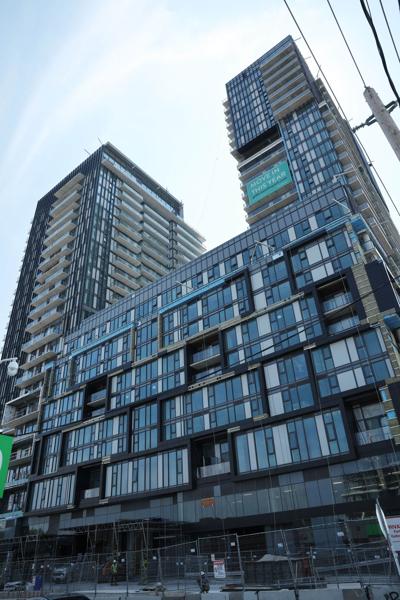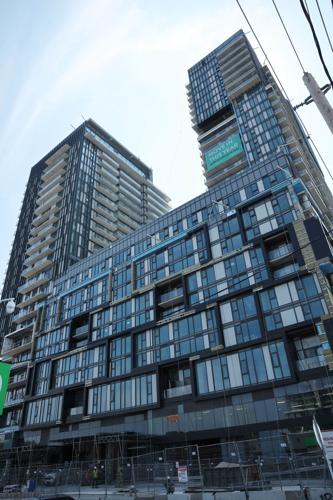The federal government faces a deepening housing crisis that is not only holding back Canada’s economic growth but also fuelling growing discontent in left-behind communities and among younger generations. Across the Organization for Economic Co-operation and Development countries (OECD), where politics isn’t fixing housing, housing is beginning to reshape politics.
Despite the urgency and complexity of the challenge, the dominant response continues to be an oversimplified mantra: “build more homes.” While supply is clearly part of the solution, framing unaffordability primarily as a chronic supply problem — caused by sluggish municipal approvals or “NIMBY” zoning — is a dangerous oversimplification.
Canada’s housing crisis is more than a planning failure. It reflects misaligned demand-supply dynamics and a growing disconnect between wages and housing costs. Even the most efficient for-profit developers cannot house the lowest-income Canadians at truly affordable rents without public support. Doubling down on market supply without a smarter strategy will not deliver real affordability — especially not for the Canadians most affected by the crisis.
This isn’t a single problem. It’s a system failure playing out in three interconnected but distinct ways: rising homelessness, worsening rental affordability, and shrinking access to home ownership. Each requires a different policy response, yet federal plans remain heavily tilted toward market-based supply solutions.
Consider homelessness. The federal platform is silent on immediate action, yet the need is urgent. A rapid expansion of the — delivered through local homeless-serving agencies — could quickly help thousands exit shelters and encampments. When paired with a renewed Rapid Housing Initiative and expanded supportive housing options, it would provide both immediate relief and longer-term stability. Manufactured housing, already used in earlier Rapid Housing rounds, could be scaled further. These actions require provincial collaboration to ensure the wraparound services needed to help chronically homeless individuals remain housed.
Rental housing presents a different but equally troubling picture. While purpose-built rental starts have quadrupled since 2015, affordability hasn’t improved. In fact, in most markets, new rental units are at least 50 per cent more expensive than existing average rents. Meanwhile, older, lower-rent stock is vanishing as landlords raise prices on unit turnover. Nearly half of Canadian renters now face unaffordable rents.
This is why the federal government must redirect capital toward non-profit, co-operative, and Indigenous-led housing providers — groups better positioned to preserve long-term affordability. A scaled-up as promised in the federal platform, could help these providers acquire and retain existing affordable housing before it’s lost to the market.
ÎÚŃ»´«Ă˝ ownership, once a cornerstone of economic stability, is now out of reach for many. The proposed of homes under $1 million may be helpful, but its real-world impact will be limited. In many major markets, new homes are already unaffordable to first-time buyers. A more effective approach would target GST relief toward all modestly priced new homes, indexed by region. Expanding shared-equity models and rethinking mortgage stress tests — which disproportionately affect younger buyers — would also help close the access gap.
Meanwhile, the idea that the federal government should “get back to building homes” misrepresents history. Ottawa never built homes directly — it enabled others to do so. Instead of launching a new federal agency, a modern “Build Canada ÎÚŃ»´«Ă˝s” initiative should fund and empower collaborative regional partnerships — municipalities working with provinces and non-profits — to plan, approve, and deliver housing, both market and nonmarket, with the needed infrastructure. B.C.’s “” model offers a ready-made blueprint for national scaling.
Let’s be clear: the private market alone will never build enough homes at the right price points to solve this crisis. Developers won’t overbuild and drive prices down. Lenders won’t finance projects they believe won’t sell. No amount of tax relief or deregulation will change these basic market dynamics. Government must step in — not as a builder of last resort, but as steward of a system that balances profit, purpose, and public need.
This is where leadership counts. The federal government can’t do everything, but it can do more to align its efforts and lead a co-ordinated national response. That begins with convening a First Ministers’ Housing Roundtable, establishing a permanent Intergovernmental Housing Council, and aligning efforts across jurisdictions to produce real results — not more rhetoric.
The housing crisis won’t be fixed with slogans or symbolic gestures. It demands clarity, humility, and co-ordinated action. Affordability isn’t a happy accident of more construction — it’s a deliberate goal, and one we must now work together to achieve.
Ěý
Ěý
Error! Sorry, there was an error processing your request.
There was a problem with the recaptcha. Please try again.
You may unsubscribe at any time. By signing up, you agree to our and . This site is protected by reCAPTCHA and the Google and apply.
Want more of the latest from us? Sign up for more at our newsletter page.




























To join the conversation set a first and last name in your user profile.
Sign in or register for free to join the Conversation